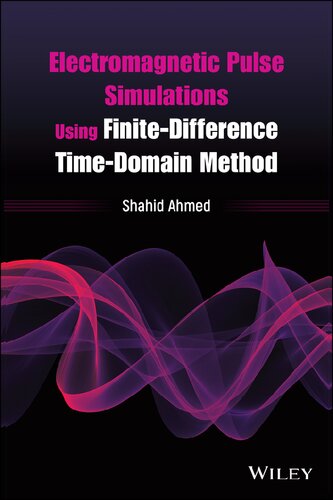

Most ebook files are in PDF format, so you can easily read them using various software such as Foxit Reader or directly on the Google Chrome browser.
Some ebook files are released by publishers in other formats such as .awz, .mobi, .epub, .fb2, etc. You may need to install specific software to read these formats on mobile/PC, such as Calibre.
Please read the tutorial at this link. https://ebooknice.com/page/post?id=faq
We offer FREE conversion to the popular formats you request; however, this may take some time. Therefore, right after payment, please email us, and we will try to provide the service as quickly as possible.
For some exceptional file formats or broken links (if any), please refrain from opening any disputes. Instead, email us first, and we will try to assist within a maximum of 6 hours.
EbookNice Team

Status:
Available5.0
28 reviewsDiscover the utility of the FDTD approach to solving electromagnetic problems with this powerful new resource
Electromagnetic Pulse Simulations Using Finite-Difference Time-Domain Method delivers a comprehensive overview of the generation and propagation of ultra-wideband electromagnetic pulses. The book provides a broad cross-section of studies of electromagnetic waves and their propagation in free space, dielectric media, complex media, and within guiding structures, like waveguide lines, transmission lines, and antennae.
The distinguished author offers readers a fresh new approach for analyzing electromagnetic modes for pulsed electromagnetic systems designed to improve the reader’s understanding of the electromagnetic modes responsible for radiating far-fields. The book also provides a wide variety of computer programs, data analysis techniques, and visualization tools with state-of-the-art packages in MATLAB® and Octave.
Following an introduction and clarification of basic electromagnetics and the frequency and time domain approach, the book delivers explanations of different numerical methods frequently used in computational electromagnetics and the necessity for the time domain treatment. In addition to a discussion of the Finite-difference Time-domain (FDTD) approach, readers will also enjoy:
Perfect for undergraduate and graduate students taking courses in physics and electrical and electronic engineering, Electromagnetic Pulse Simulations Using Finite-Difference Time-Domain Method will also earn a place in the libraries of scientists and engineers working in electromagnetic research, RF and microwave design, and electromagnetic interference.